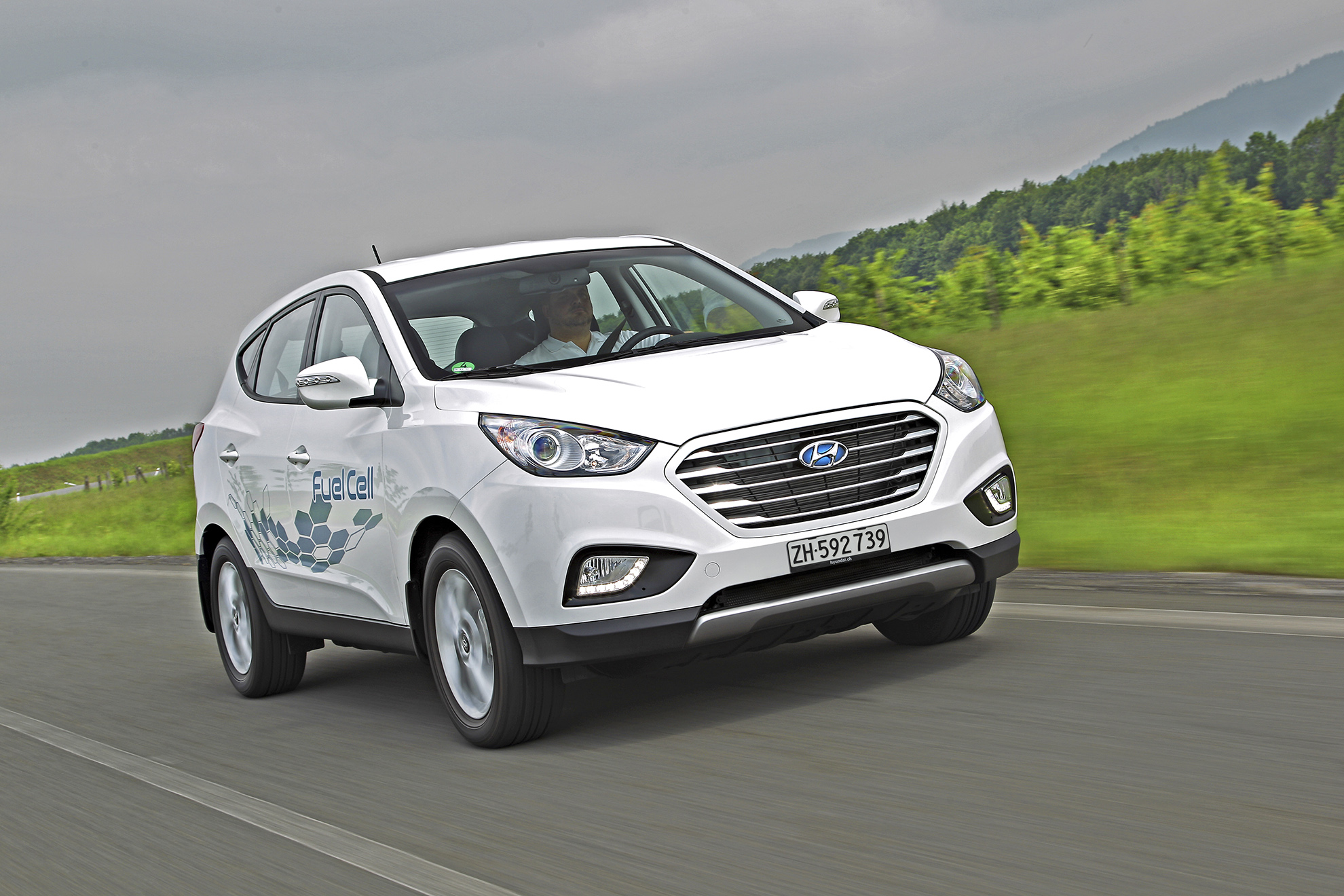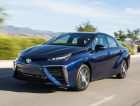Fuel crucial for life cycle assessment
Are fuel cells environmentally friendly? Not always!

|
Two fuel-cell cars have been on the market since 2015: the Hyundai ix 35 fuel cell (above) and the Toyota Mirai (below). A study conducted at Empa concludes that these cars will only become more environmentally friendly than today’s models in the future, once there is hydrogen from renewable sources. Image: hyundai.presscorner.ch |
|||
|
In the future, we might be driving fuel-cell cars that burn solar-generated hydrogen. This would make the “zero emissions car” a reality. At the same time, small combined heat and power units – also based on fuel cell technology – could be placed in our cellars at home. They convert natural gas and biogas into electricity while generating heat as an added “bonus” to warm the building. |
|||
|
Key question: How is the electricity being generated? Nor does the fuel cell stand a chance in the eco-comparison with electric cars for now: First of all, electricity is needed to generate hydrogen, which the car tanks up on. Electricity is then produced from hydrogen again in the car. This double conversion significantly reduces the efficiency level. People who use the same electricity to charge the battery in their electric cars directly travel more economically and thus in a more environmentally friendly way. |
|||
| Combined heat and power units: world champions of energy efficiency When it came to comparing combined heat and power units, the research team pitted a fuel cell based on state-of-the-art carbon nanotubes against a Stirling engine. This zero-emission machine, which was invented and patented by the Scottish clergyman Robert Stirling in 1816, converts heat into kinetic energy. Both types of combined heat and power unit can be operated with natural gas. The result of the calculation: a slight advantage for the fuel cell as it converts a higher proportion of natural gas into valuable electricity. Anyone who uses it to produce heat and electricity simultaneously exploits 90 percent of the energy contained in the natural gas – a huge proportion. Combined heat and power units – regardless of the type – are therefore masterpieces of energy efficiency. The drawback, however: A fuel cell contains rare metals such as platinum, which are becoming increasingly more expensive and might be difficult to obtain in the future; the Stirling engine, on the other hand, can simply be constructed from steel. |
|||
|
|
|||
|
Toyota Mirai - a fuel cell vehiclev. |
||
|
|
|||
|
Electric cars with EU electricity not better than gas-powered cars The result: Taking the current EU power mix as a comparison, with an assumed consumption of 6.1 l/100 km after 150,000 km of mileage, the gasoline-powered compact car is ahead by a nose. The electric car charged with EU electricity produces slightly more environmental pollution – comparable to 6.4 l/100 km of gasoline consumption. Today, a small fuel-cell car that uses EU electricity to generate hydrogen would easily be the worst option. The car would have the same environmental impact as a luxury sports car with a gasoline consumption of 12.1 l /100 km. However, the fuel cell could be a key future technology – especially when surplus electricity from wind power and solar energy is stored temporarily in the form of hydrogen and thus becomes accessible for household heating or mobility. Currently, wind farms are simply switched off when there is too much electricity on the market and the eco-energy goes to waste. |
|||
|
|||
|
|||

